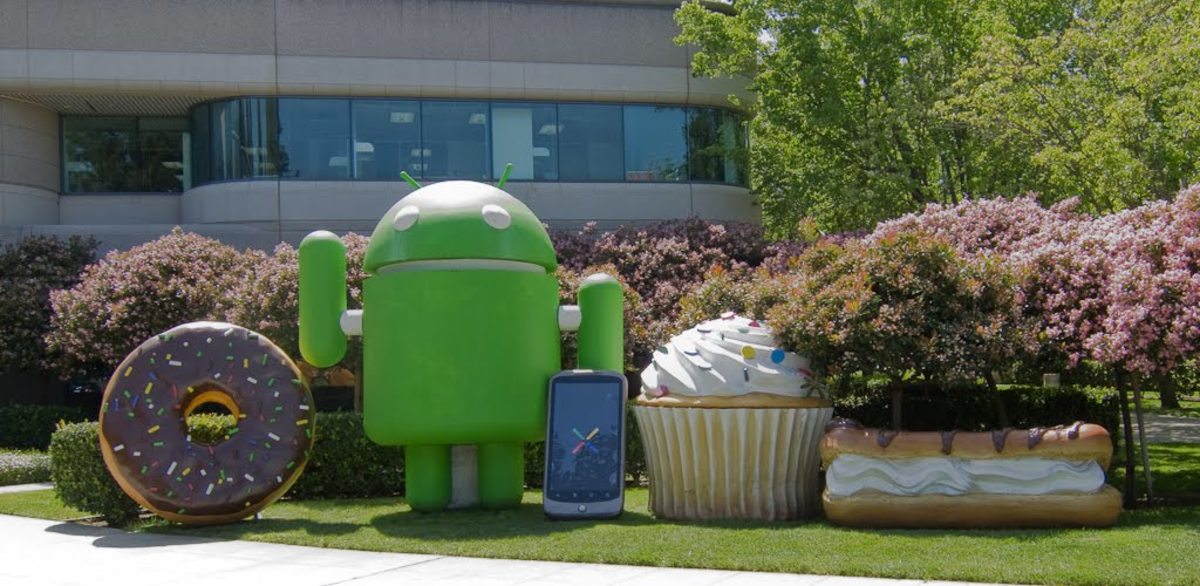
The Mascots on Google Campus, from left to right: Donut, Android (and Nexus One), Cupcake, and Eclair | Source
Android and Dessert Names
Revised 03SEP-2013
Google's Android division certainly has a sense of humor: It named all of its version codenames after desserts (just as Intel names all of its CPUs after rivers). To celebrate a new version, a giant mock-up of the dessert that matches the codename is usually delivered to the Google Campus and put on display.
So what are the different versions of Android OS and the desserts associated with them? Let us go over a short history.
Android 1.0 and 1.1: Unnamed
There appears to be no codename assigned to versions 1.0 and 1.1 of Android OS.
Google bought a company called Android back in July 2005. Android was headed by several mobile big shots, including the former head of a big carrier, ex-owner of a phone maker, and more. After their buyout, Android went into stealth mode, and rumors spread that Google was working on a mobile phone.
The dam finally broke in November 2007, when Google suddenly announced that they were indeed working on a phone (Google Phone). More than that, they were also working on a brand-new mobile operating system called Android, based on the Linux kernel, to be used by the Open Handset Alliance, a group of 65 different hardware makers, carriers, and other mobile-related companies.
HTC was the first phone maker to get a real consumer phone out, the T-Mobile G1 (also known as the HTC Dream outside of US), on October 2008.
An update of Android, version 1.1, was released in February 2009. However, the first significant version of Android OS that really showcased the power of the platform was V1.5, codenamed "Cupcake."
As Cupcake starts with letter "C", many have suspected that 1.0 had a codename starting with "A" and 1.1 had one starting with "B," but no actual codenames were ever assigned.
Android 1.5: Cupcake

The Android cupcake on Google's campus | Source
Technically Android 1.5 wasn't the first version, but versions before it don't seem to have received any codenames. Stories were told that it was supposed to be version 1.2, but Google decided to make it a major revision and made it 1.5 instead. Among the many changes with Cupcake, third-party keyboard and Widgets were enabled and phone could upload directly to YouTube and Picasa. The company codenamed the version "cupcake," which is how the trend of dessert names began.
A cupcake is a small, individually-sized cake baked in a cup-shaped mold. It is usually served with frosting on top.
Android 1.6: Donut

The Android donut on Google's campus | Source
Android V1.6, codenamed "Donut," was released in September 2009. It fixed reboot errors in the OS, revamped photo and video features (i.e. camera interface), and featured better search integration. It also added support for larger screen sizes and is the first version to offer Google's turn-by-turn navigation feature.
A donut is a small ring-shaped friedcake. The ring is made of rich, light dough and deep-fried. Various sweet coatings can be added. Donuts are not to be mistaken for bagels, which are baked, much denser, and usually salty.
Android 2.0 and 2.1: Eclair

The Android eclair on Google's campus | Source
Android 2.0 was released in October 2009, with a bugfix version (2.0.1) coming out in December 2009. Android 2.1 was released January of 2010. Most people consider them a single release. Added features include Bluetooth 2.1 support, flash and digital zoom for the camera, multi-touch support, live wallpapers, and more.
Eclairs are usually described as oblong cream puffs. They are baked pastries with cream filling and chocolate coating on top.
Android 2.2: Froyo

The Android froyo on Google's campus | Source
Android 2.2 mainly improved speed by adopting the Javascript "just-in-time" compiler engine from Google's browser, Chrome. It also improved browser support by adding animated GIF support and Flash 10.1 plug-in support, along with USB tethering and Wi-Fi Hotspot capability (for those with supporting hardware).
Froyo is short for "frozen yogurt." It is a frozen dessert made from yogurt, so it is slightly more sour than soft serve, but also lower in fat.
Android 2.3, 2.4: Gingerbread

The Android gingerbread man on Google's campus | Source
Gingerbread was officially released in December 2010.
On December 6th, 2010, Google officially announced the first phone with Android OS 2.3 Gingerbread. The phone was the Nexus S, which Google co-developed with Samsung. The phone was originally only available for T-Mobile, but was later made for Sprint and AT&T as well.
Gingerbread supports SIP internet calling, NFC wireless transaction capability (if hardware is present), more than one camera, and gyroscopes and other sensors (barometers, gravimeters, and others are possible). It also features a download manager, some tweaks to allow usage on Tablets, and other system level tweaks for programmers.
As a dessert, gingerbread is basically a ginger-flavored cookie. It is often made to celebrate end-of-year holidays in the US. The cookies are cut into festive shapes—often the shape of a man—and decorated with icing and candy.
Android 3.0, 3.1, and 3.2: Honeycomb
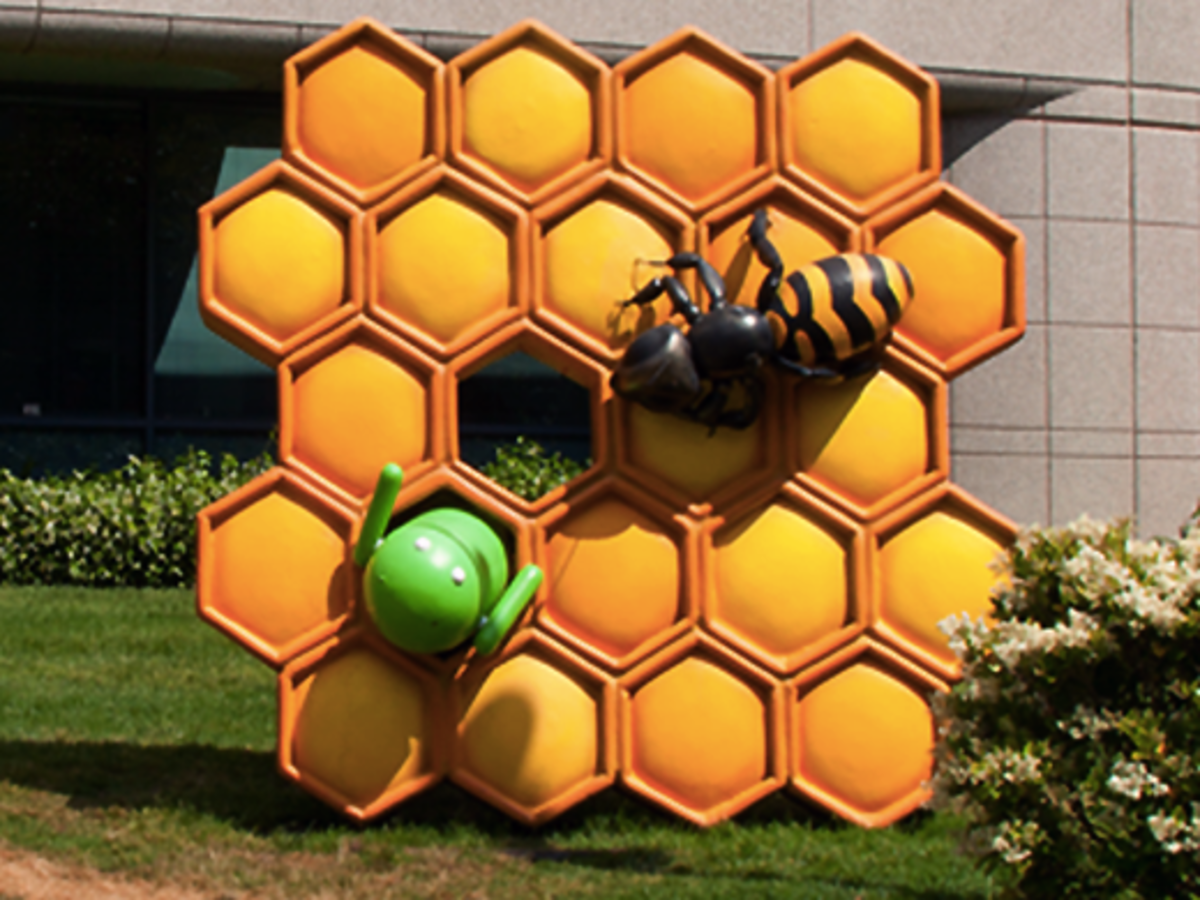
The Android honeycomb on Google's campus | Source
Honeycomb was released in February 2011, and was rapidly followed by 3.1 and 3.2 in July and August of 2011. Google posted a lot of previews and highlights on Honeycomb.
Honeycomb was made for tablets, which implied that Android OS 2.X was not. That did not stop Samsung and a slew of smaller manufacturers from putting out an army of Android 2.X tablets of various sizes before the end of 2010 as they tried to ride the wave of the iPad's success in time for the Christmas shopping season.
Motorola Xoom was the first Android 3.X tablet to be released. It has since been followed by many others.
Dessert-wise, honeycomb is a sheet of hexagonal cells bees build out of wax and fill with honey. Fresh honeycomb can be consumed as a dessert—some people chew or even consume the wax with the honey.
Android 4.0: Ice Cream Sandwich
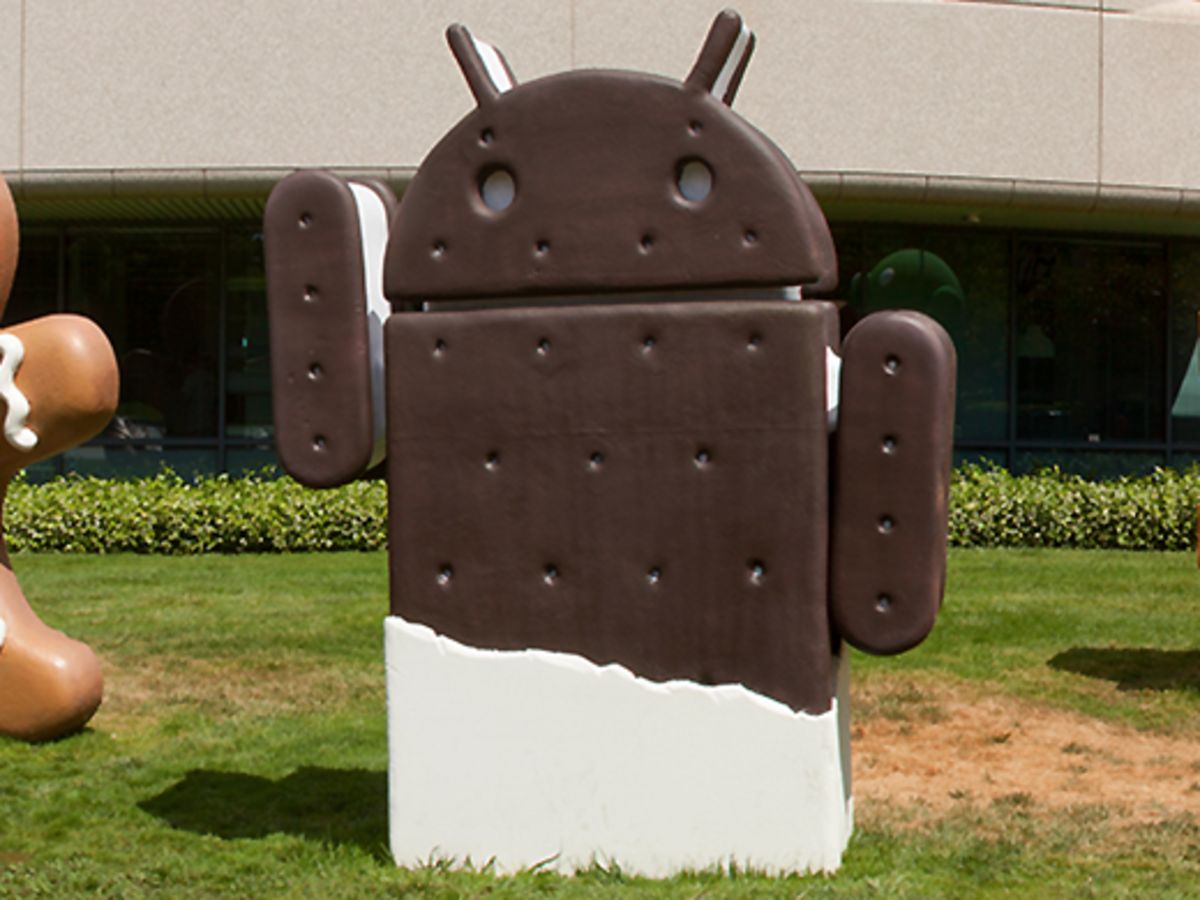
The Android ice cream sandwich on Google's campus | Source
Ice Cream Sandwich was Google's attempt to synthesize Honeycomb, it's tablet-only platform, with its mobile platform. Released in October 2011, it featured a new design and default font, as well as the ability to monitor and limit mobile data usage and other upgrades. Many devices were slow to adopt Ice Cream Sandwich. Three months after Ice Cream Sandwich, only one phone (Samsung Galaxy Nexus) had been released to run it.
In real life, an ice cream sandwich is a layer of ice cream, usually vanilla, sandwiched between two cookies, usually chocolate. They are often rectangular in shape.
Android 4.1: Jelly Bean
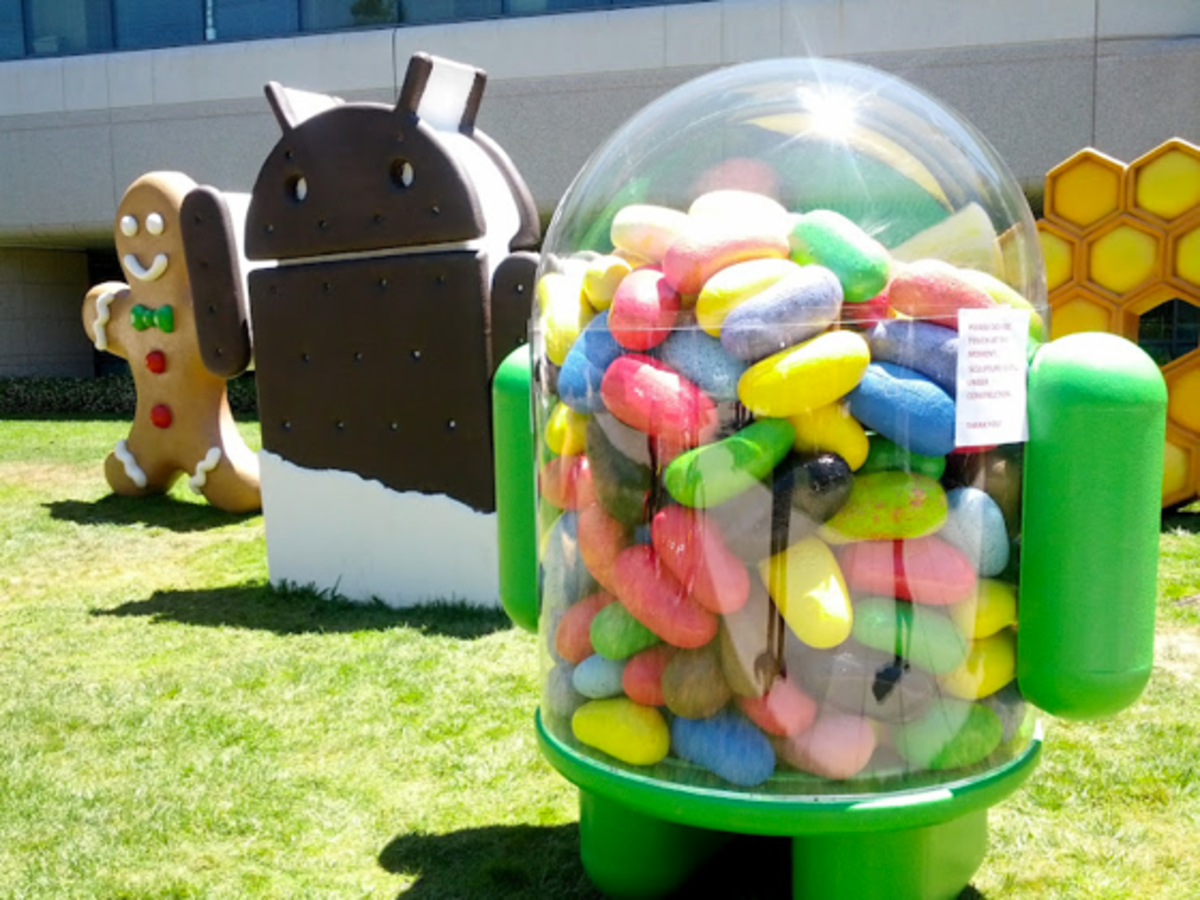
The JellyBean mascot on Google's campus
Jelly Bean came out in 2012. Biggest changes included "Google Now," an AI assistant that anticipates your needs and better, more interactive notifications. Jelly Bean also allows "voice typing," a built-in speech-to-text engine that does not rely on Internet or data.
Android 4.4: KitKat
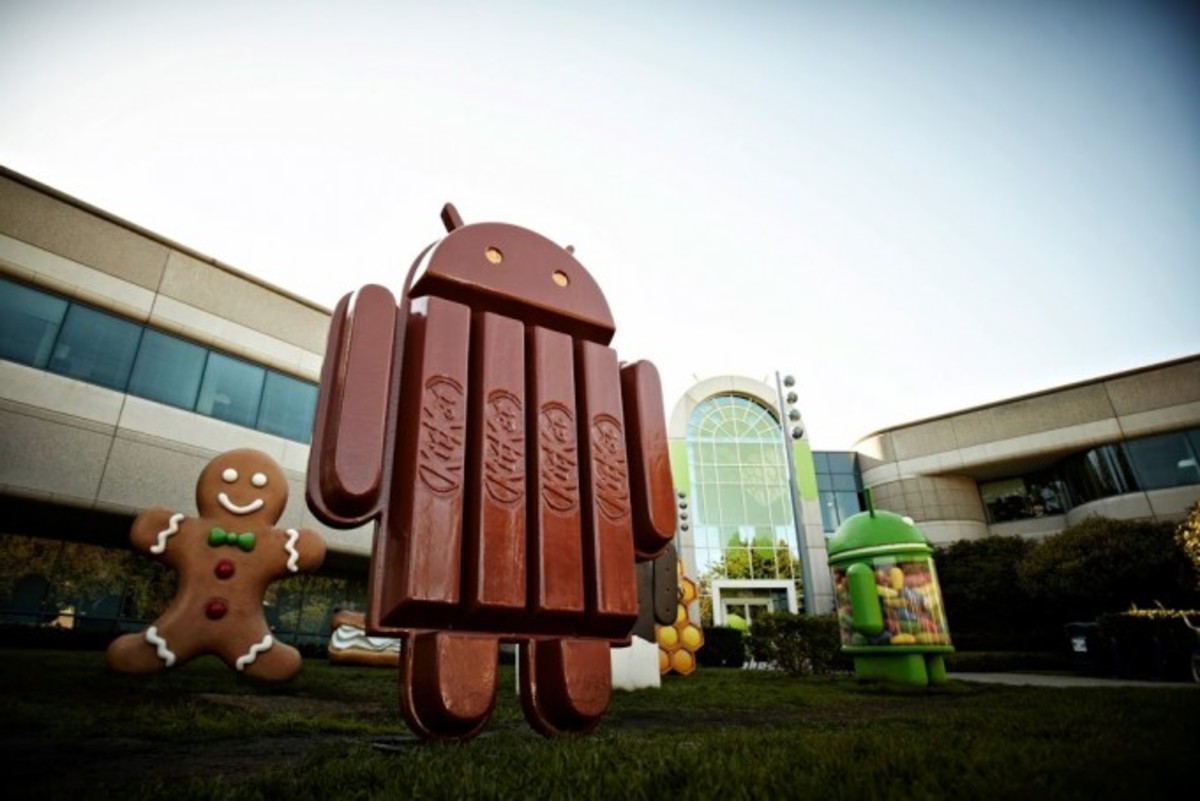
The Android 4.4 KitKat mascot on Google Campus | Source
Google announced that Android 4.4 would be named KitKat on September 3, 2013. KitKat's parent company, Nestlé, was fully on board with the naming of operating system and launched an advertising campaign during KitKat's release. As part of the campaign, specially marked packages of Kitkat with Andy the Green Android on the package each contained a sweepstakes code that could win a new Nexus 7 Android tablet or Google Play store credit.
KitKat took the Google Now feature and took it a step further with "Ok Google." Ok Google allows people to access Google Now without even touching their phones—just verbally saying the phrase opens up the artificial intelligence assistant. KitKat also introduced Emoji to Google's keyboard.
Android 5.X: Lollipop
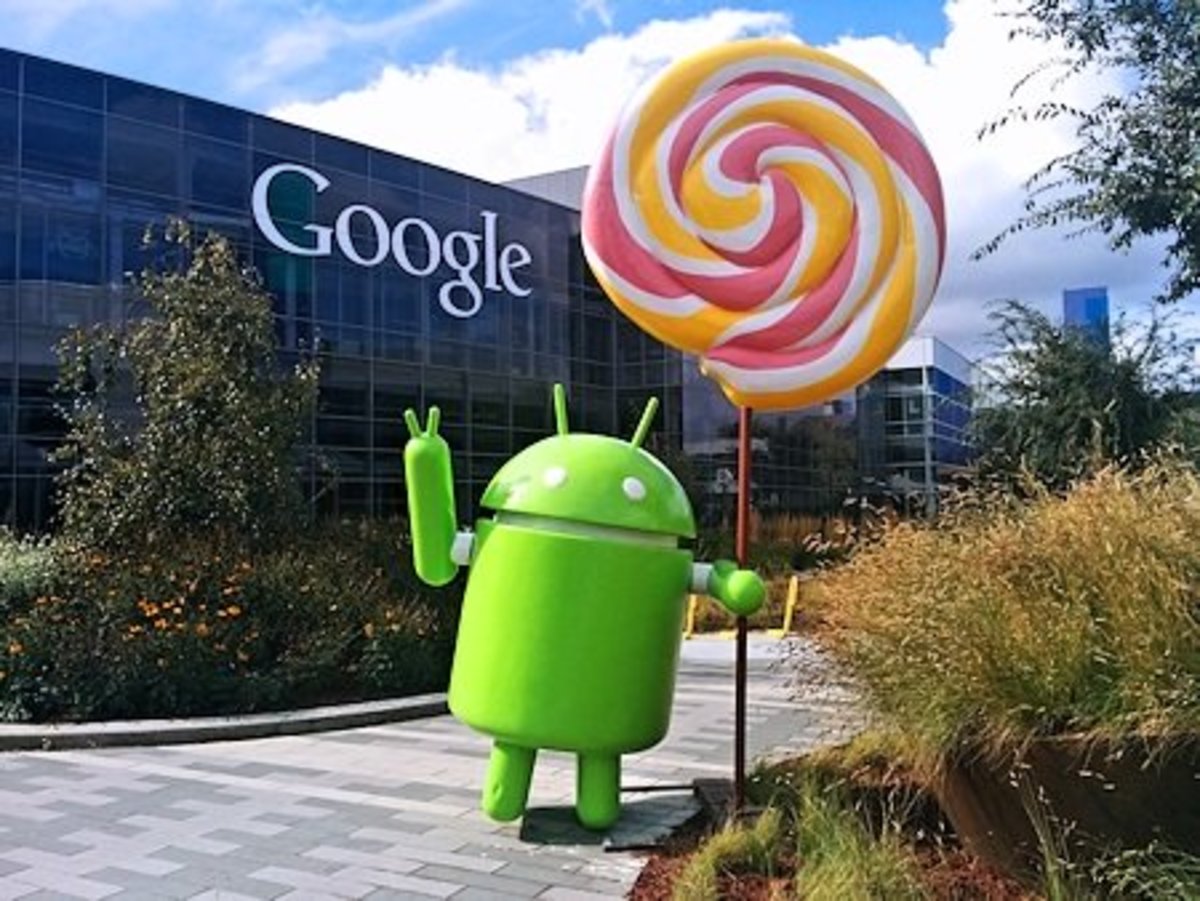
The Android lollipop on Google's campus | Source
Android 5 is called Lollipop, and it featured a brand new runtime called ART that no longer relies on the older DALVIK runtime (which is somewhat based on Sun/Oracle specs). Lollipop also contains other UI improvements and has an excellent battery life on some devices.
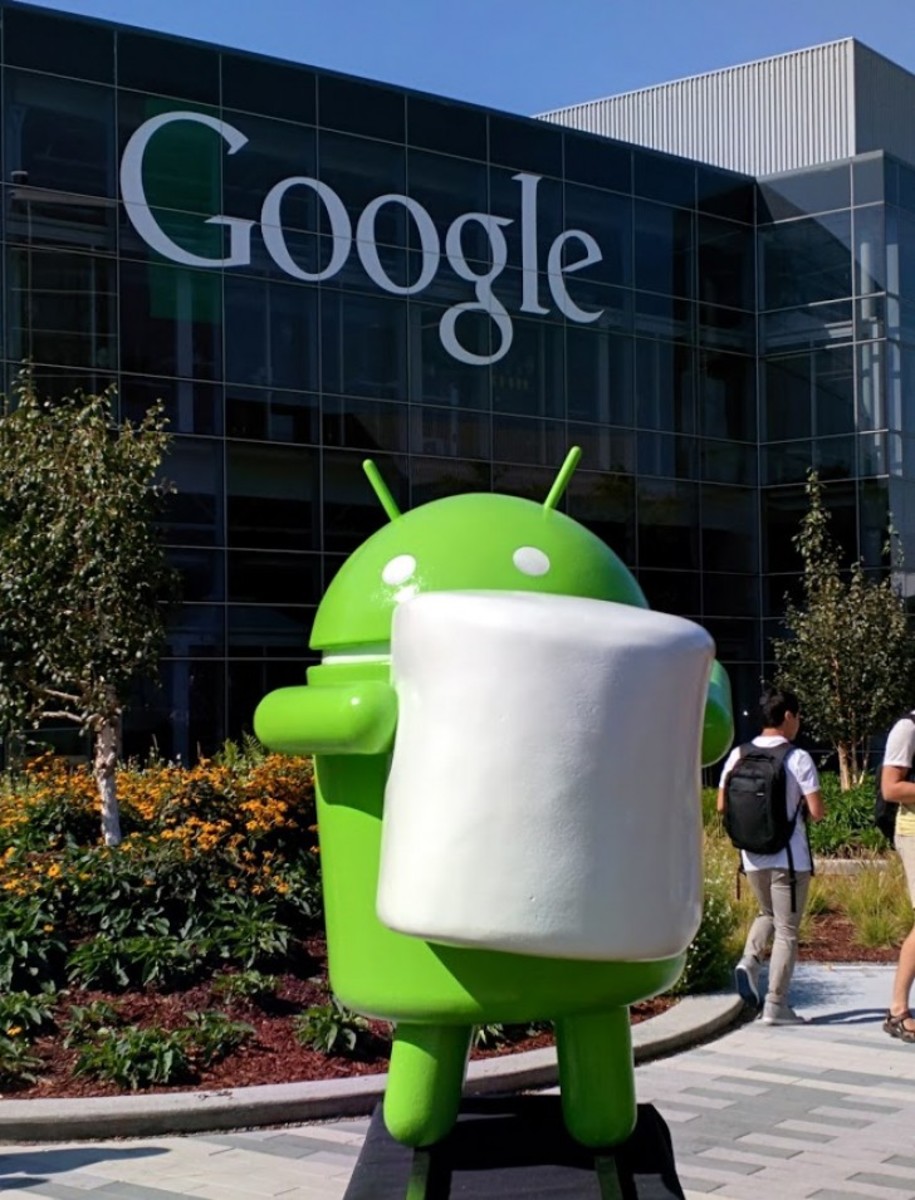
Android 6: Marshmallow mascot on Google Campus
Android 6.X: Marshmallow
Android 6: Marshmallow is already out for the Nexus devices and is believed to be coming soon to all flagship devices before end of the year, and to other devices by mid 2016.
Marshmallow introduced several changes that can have significant impact. App permission model is now opt-in (grant specific permission as requested) rather than opt-out (all is permitted, then use App Ops to run off individual permissions). Doze mode allows the device to go into hibernation when idle, cutting power consumption to virtually nil. Fingerprint sensor support is now baked into the OS rather the vendor support, and USB C is now fully supported. Finally, Marshmallow allows one to format a microSD card and adopt it as if it's internal storage and share the same internal security level.
Android 7.0–7.1.1
Android 7.0–7.1.1 "Nougat" (codenamed Android N during development) is the seventh major version of the Android operating system. First released as a beta build on March 9, 2016 it was officially released on August 22, 2016, with Nexus devices being the first to receive the update, though the LG V20 was the first new smartphone released with Nougat.[6]
Nougat introduces notable changes to the operating system and its development platform, including the ability to display multiple apps on-screen at once in a split-screen view, support for inline replies to notifications, as well as an OpenJDK-based Java environment and support for the Vulkan graphics rendering API, and "seamless" system updates on supported devices.

